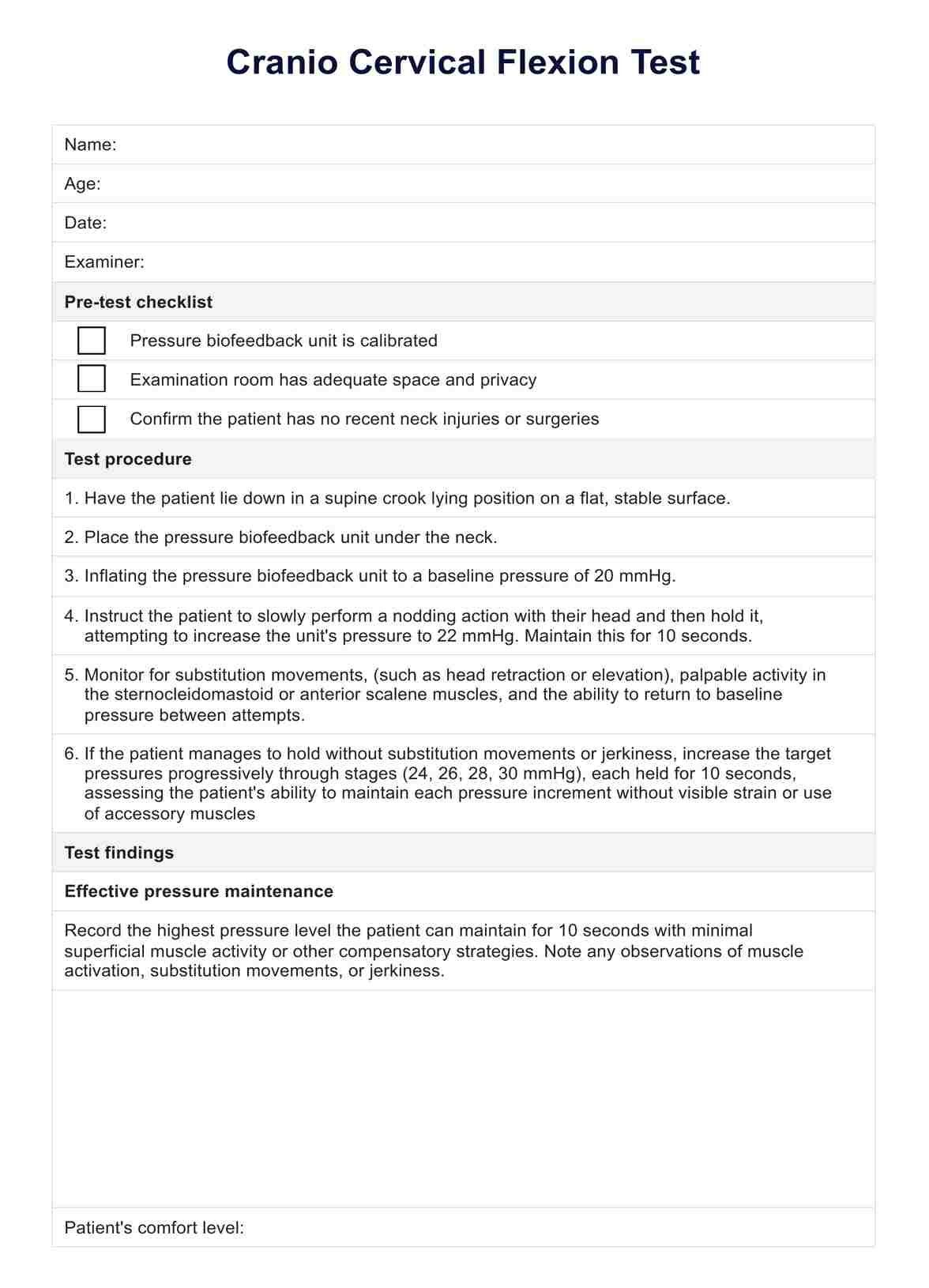Craniocervical instability is diagnosed through a combination of physical examinations, patient history, imaging tests like MRI or CT scans, and specific functional tests that assess the stability of the cervical spine.

Cranio Cervical Flexion Test
Streamline your clinical assessments with our Cranio Cervical Flexion Test template. Perfect for evaluating neck muscle function efficiently and accurately.
Cranio Cervical Flexion Test Template
Commonly asked questions
The craniocervical flexion test is a clinical assessment used to evaluate the strength and coordination of the deep cervical flexor muscles, crucial for supporting the cervical spine and maintaining neck posture.
Treatment for cranio cervical instability typically includes physical therapy to strengthen neck muscles, possibly wearing a cervical collar, pain management, and in severe cases, surgical interventions to stabilize the spine.
EHR and practice management software
Get started for free
*No credit card required
Free
$0/usd
Unlimited clients
Telehealth
1GB of storage
Client portal text
Automated billing and online payments











